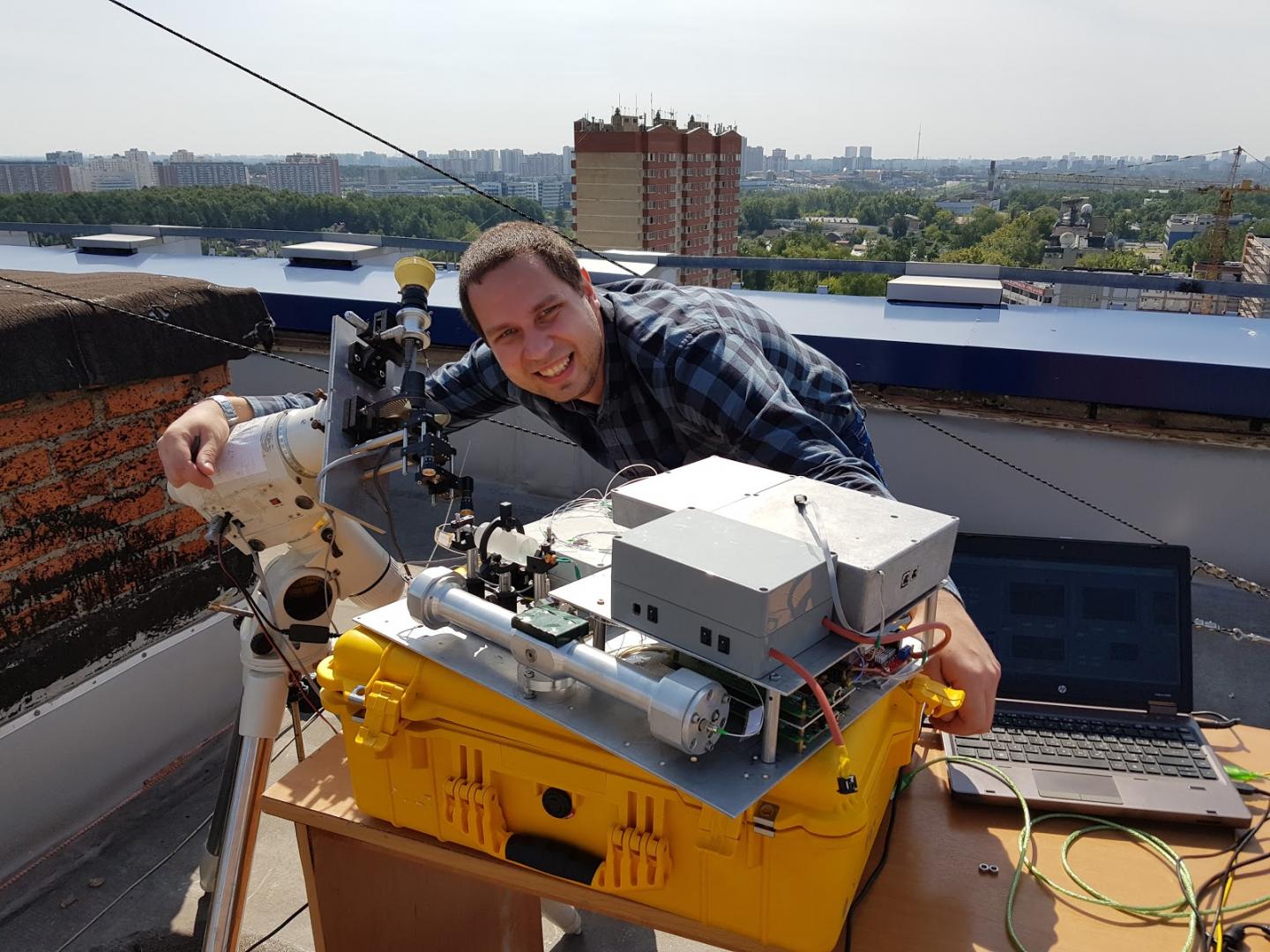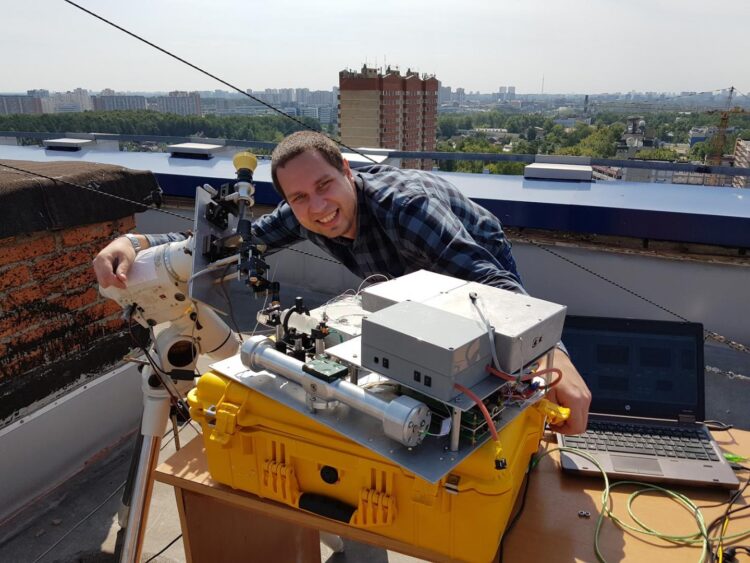
Credit: Alexander Rodin/MIPT
Physicists from the Moscow Institute of Physics and Technology have developed a new method for wind speed remote measurements. It may complement the widely employed lidar and radar sensing techniques. The paper came out in Atmospheric Measurement Techniques.
Wind speed measurements are essential for many applications. For example, assimilation of these data is required for fine-tuning climatological and meteorological models, including those used for weather forecasting. Despite the progress made in remote sensing over recent decades, measuring the movement of air masses is still a challenge. Most of the data are collected by means of traditional contact methods: via sensors installed on weather stations or sounding balloons. Lidar or sonar anemometers are commonly used for local measurements at distances of several hundred meters or less. Weather radars can help at distances of up to tens of kilometers. However, the latter are normally ineffective outside the troposphere — the Earth’s closest atmospheric layer, which is 10 to 18 kilometers thick. Satellite-based direct measurements of the movement of air masses are rare, only occasional experiments have been accomplished.
“Information on atmospheric dynamics is still fairly hard to obtain through direct observations. As of today, the most reliable way to remotely measure wind speeds is using Doppler radars. This technique involves sounding the environment with a powerful source of radiation and therefore takes considerable resources, including power, equipment mass, size, and cost. Our instrument offers an advantage in terms of these parameters: It’s compact, inexpensive, and involves commercial components available in the telecom market,” commented the study’s lead author Alexander Rodin, who heads the Applied Infrared Spectroscopy Lab at MIPT.
The instrument is based on the principle of heterodyne detection, which is at work in many radio engineering applications. However, it should be noted that the instrument operates in the optical, or to be more precise, the near infrared range — at a wavelength of 1.65 micrometers. The operating principle is based on combining the received signal (in this case, solar radiation that has passed through the atmosphere) and an etalon source (local oscillator), namely a tunable diode laser. Since the laws of electromagnetic wave propagation are the same for all spectral ranges, the principle of heterodyning is equally applicable to both radio signals and infrared radiation.
However, heterodyning faces certain difficulties if applied to the optical range. For instance, highly accurate matching of wave fronts is required, as displacement by even a fraction of a wavelength is unacceptable. The MIPT team employed a simple solution, applying a single-mode optical fiber.
A further challenge is the need for extremely precise frequency control of the local oscillator, with an error of no more than 1 MHz, a tiny quantity compared to the optical radiation frequency. To address this, the team had to employ a tricky approach and delve deep into the processes of diode laser emission. These efforts have resulted in a new instrument — an experimental laser heterodyne spectroradiometer — characterized by an unprecedented spectral resolution in the near infrared range. It measures the infrared atmospheric absorption spectrum with an ultra-high spectral resolution, making it possible to retrieve wind speeds with an accuracy of 3 to 5 meters per second.
“Building an instrument, even with record characteristics, is only half of the story,” Rodin commented. “To retrieve wind speed at various altitudes up to the stratosphere using the measured spectra, you need a special algorithm that solves the inverse problem.”
“We decided not to use machine learning but to implement a classical approach based on Tikhonov regularization. Despite the fact that this method is known for more than half a century, it is widely used all over the world, and its capabilities are far from being exhausted,” the scientist insisted.
The calculations will enable vertical wind profile retrieval from the surface up to about 50 kilometers. Based on the relatively simple and affordable spectroradiometer, in the future one may create extensive networks for atmospheric monitoring.
The Applied Infrared Spectroscopy Lab at MIPT is planning to carry out an observational campaign to measure the stratosphere polar vortex as well as greenhouse gas concentration in the Russian Arctic with their newly developed instrument. In addition to that, in cooperation with the Space Research Institute of the Russian Academy of Sciences, the lab is developing an instrument for the studies of Venus atmosphere based on the same principle. The instrument is supposed to be installed onboard India’s Venus orbiter in the framework of international cooperation.
###
In developing their novel tool, the MIPT researchers were joined by colleagues from the Space Research Institute and Prokhorov General Physics Institute of the Russian Academy of Sciences, and Samsung R&D Institute Russia.
The study reported in this story is supported by the Russian Foundation for Basic Research.
The MIPT Applied Infrared Spectroscopy Lab has been founded by Vladimir Krasnopolsky in the framework of the Russian Government’s “Megagrant” program. The lab conducts research and development in the field of spectral analysis of natural and technogenic environments, meteorology, ecology, and climate of the Earth and other planets. The laboratory is participating in the international ExoMars mission, and a Roscosmos-NASA effort to explore Venus. Alexander Rodin ([email protected]) has headed the laboratory since 2016.
Media Contact
Varvara Bogomolova
[email protected]
Original Source
https:/
Related Journal Article
http://dx.





